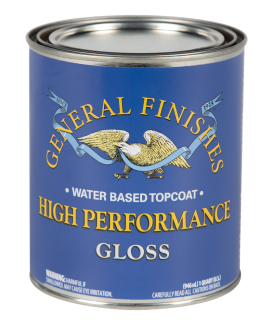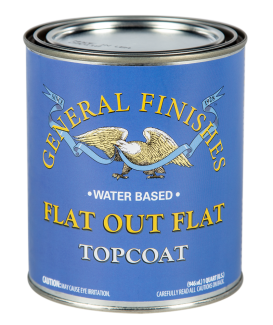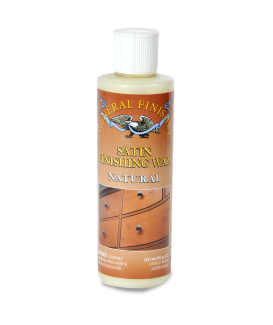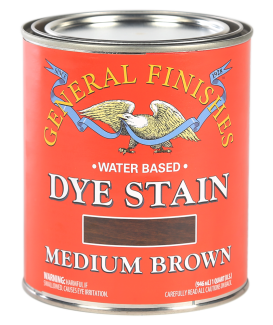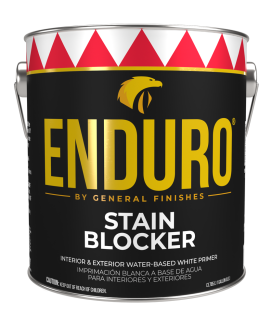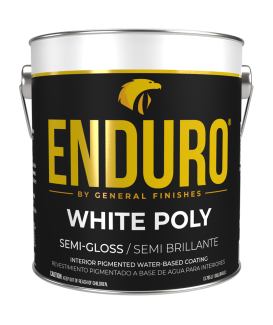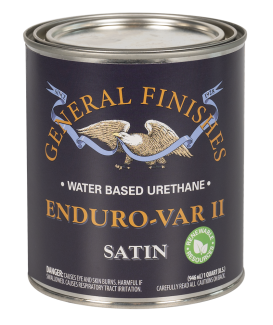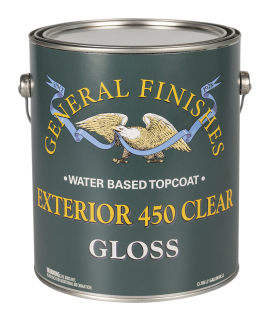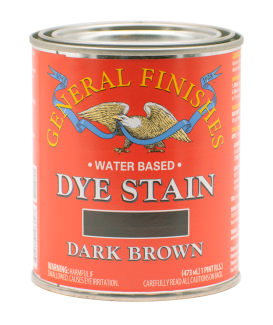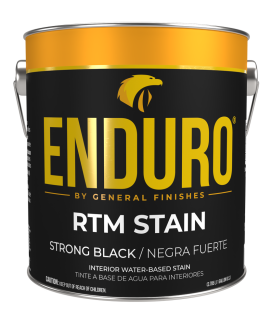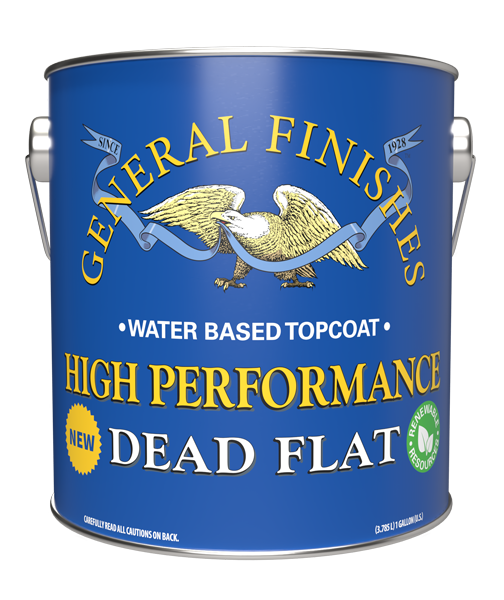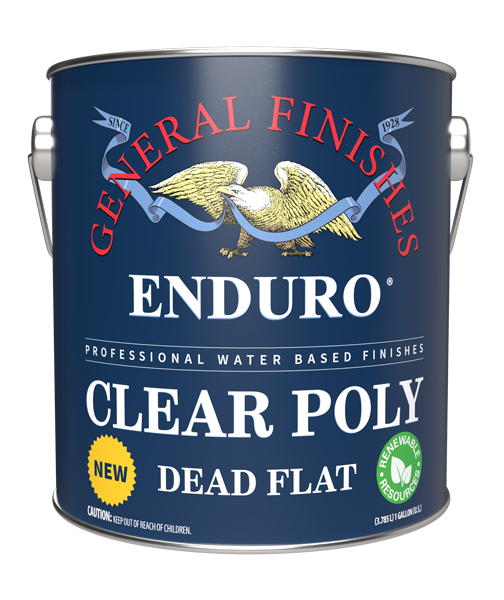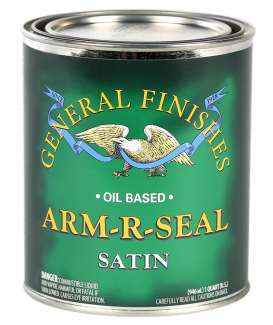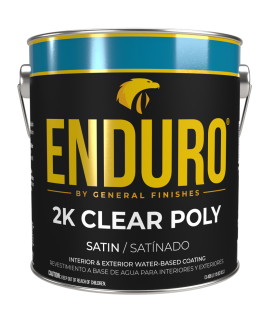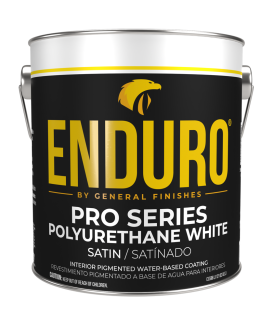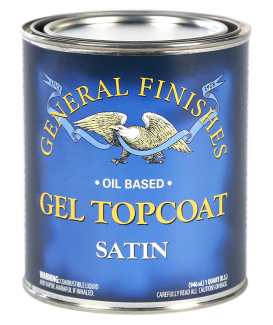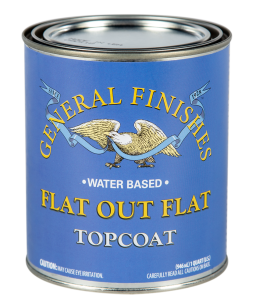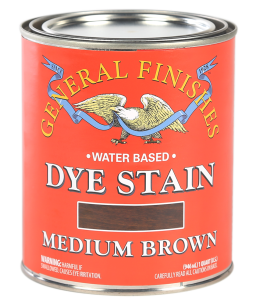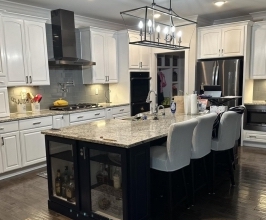GF recommends using the least expensive product that will provide the needed performance characteristics. We offer a range of products designed for professional spray applications and brush-on finishes for consumer use.
Compare all GF Topcoats Here
Watch Video: Comparison of All GF Water Based Finishes Here
PROFESSIONAL TOPCOATS
ENDURO PRE CAT LACQUER (Spray only)
Looking for hardness, clarity and fast stack time? Pre Cat Lacquer is the choice. Use in applications where there is little risk of chemical contamination issues from substances such as ketchup, soap, chemical cleaners, or ammonia. This is the perfect spray finish for interior doors, casing, moldings, door jambs and furniture that receives light use. When you think about it, interior doors don't take a lot of wear. You might wipe them down or dust them once in a while but that is about it. PreCat Lacquer is a hard finish that provides excellent build and superior clarity at a phenomenal price point. If you are not finishing a surface such as a tabletop where you anticipate chemical contamination during use, why pay for a more expensive finish?
Dries clear.
Watch Pre Cat Lacquer Product Overview Video Here
ENDURO CLEAR POLY (Spray only)
Poly is the go-to cabinet finish. It has all the durability you need at a lower price point than Conversion Varnish. It is similar to High Performance in test measurements for chemical, water and wear resistance, but HP can be brushed and Clear Poly can't - it is already thinned for spraying. Clear Poly has a bit of an edge over High Performance in overall chemical resistance, a 98 rating vs 92.
Dries clear.
Watch Clear Poly product overview video here
ENDURO CONVERSION VARNISH (2K-Spray only)
This is our top of the line. Conversion Varnish is a post catalyzed high solids, two component urethane formulated for professionals who need the highest level of durability and chemical resistance. Varnish will cure the fastest. Requires NCO Catalyst. It is recommended for commercial applications or extremely high-wear surfaces such as countertops and bar tops
Dries clear.
Watch Conversion Varnish Product Overview Video Here
Enduro 2K Clear Poly (Spray Only)
For today's professional, industrial and OEM users, water-based Tintable 2K Clear Polyurethane is formulated to stop your biggest frustrations and provide ultimate durability for interior/exterior use. Key features are easy application, fast film build & production time, excellent adhesion, plus optimum water & chemical resistance.
Dries clear.
Watch 2K Clear Poly Product Overview Video Here
Enduro Pro Series Clear Poly
General Finishes Enduro Pro Series Clear Polyurethane is a single-component, self-cross linking polyurethane/acrylic topcoat designed for fast build with excellent flow and leveling. Priced competitively for the professional and industrial markets, Pro Series Clear is tintable and meets or exceeds KCMA standards. Recommended use is interior cabinets, trim, doors, and furniture. Use over raw, stained, or primed wood substrates.
Dries clear.
RETAIL TOPCOATS
HIGH PERFORMANCE (Brush or Spray)
GF's best performing brush on finish with very similar performance testing as our Poly. (High Performance can be thinned for spraying).
Dries clear.
Watch High Performance Product Overview Video Here
FLAT OUT FLAT (Brush or Spray)
Flat Out Flat is formulated with a self cross-linking acrylic, and is designed to mimic the look and feel of a wax finish. Because of the increased matting agents used to create the "Flat look", this finish will have less clarity. Like wax, it dries softer to the touch than High Performance when completely cured, and will show more fingerprints. FOF finish will mark up more easily because of increased matting agents used to reduce the sheen, so it is not recommended for high-use tabletops.
Dries clear.
Watch Flat Out Flat Product Overview Video Here
BOTH PROFESSIONAL AND RETAIL TOPCOATS
ENDURO-VAR II (Spray or brush)
Enduro-Var II is an oil modified water-based alternative for customers that want the warm look of an oil finish in a water based coating. It looks more like an oil finish than a water coating, and can be sprayed or brushed. The original Enduro-Var adheres well ONLY over WATER STAINS, DYE STAINS, and RAW WOOD. Use over other finishes at your own risk. The new formula of Enduro-Var II is compatible with all GF products and dries to a lighter amber than the previous formula.
Dries Amber
Watch Enduro-Var II Product Overview Video Here
EXTERIOR 45O TOPCOAT
Exterior 450 provides a clear drying tough, protective finish that will withstand the rigors of the sun, rain, and wind. It is suitable for vertical surfaces such as fences, patio furniture, garage doors, entrance doors, outdoor kitchens and interior windows. It is not recommended as a deck finish. Fortified with UV absorbers to stabilize the finish, Exterior 450's built-in mildewcide retards mold and mildew growth.
Dries Clear
Watch Exterior 450 Topcoat Overview Video Here

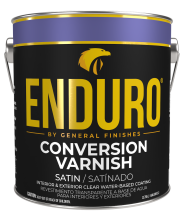 Enduro Water-Based Conversion Varnish
Enduro Water-Based Conversion Varnish
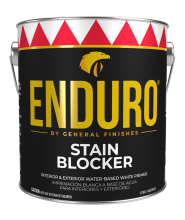 Enduro Water Based Stain Blocker Primer
Enduro Water Based Stain Blocker Primer
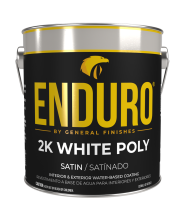 Enduro Water-Based Tintable 2K White Poly
Enduro Water-Based Tintable 2K White Poly
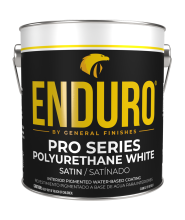 Enduro Water-Based Pro Series White Polyurethane
Enduro Water-Based Pro Series White Polyurethane
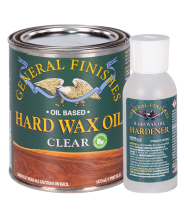 Hard Wax Oil & Hardener
Hard Wax Oil & Hardener
 Gel Stains
Gel Stains
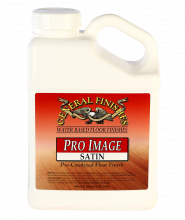 Pro Image Flooring Topcoat
Pro Image Flooring Topcoat
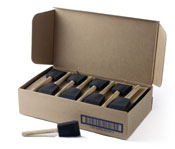 Jen Poly Brushes
Jen Poly Brushes
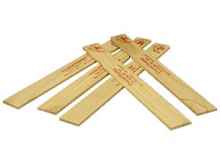 Stir Stix
Stir Stix
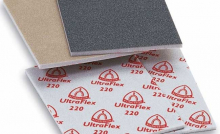 Ultraflex Softback Sanding Sponge
Ultraflex Softback Sanding Sponge

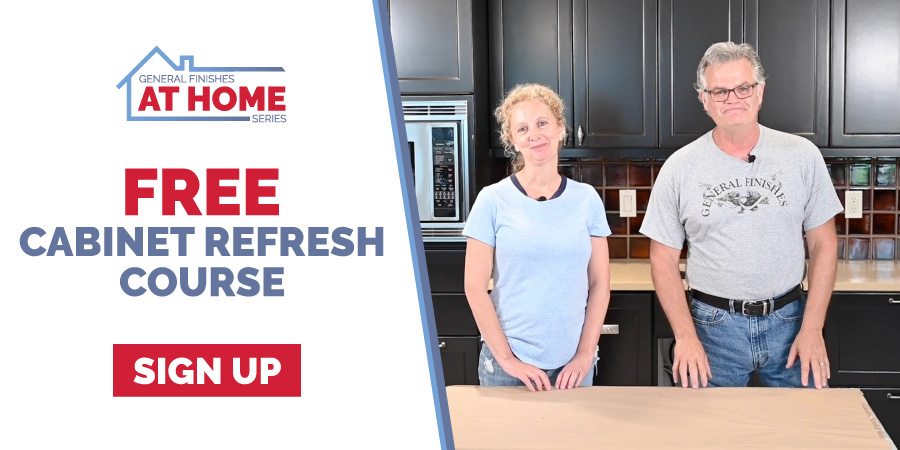

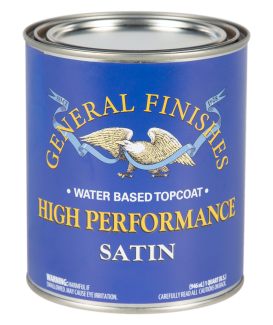

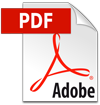 TDS: Water Based Topcoat High Performance - 2021-12
TDS: Water Based Topcoat High Performance - 2021-12

